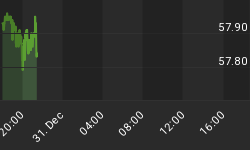Last week's game changer seems to be spot on as investors adjust to a world where there isn't the constant speculation of what the Fed is going to do next. We already know what the Fed is going to do. They have told us that they are "all in". There is QE to infinity and beyond or at least until 2015, whichever comes first. All of a sudden, bad news seems to be bad news. The Fed is gone from the market equation. So what will lift prices? In the absence of another Fed bombshell (not coming anytime soon), it is hard to see what the upside catalyst might be. Global growth? No. An improving US economy and employment picture? Not likely. A resolution to our fiscal woes? Not until there is a crisis. Europe is fixed? Don't make me laugh. Another stimulus from Japan? The last one had a half life measured in hours. Some would call this the "wall of worry". Call it what you want, but with the "dumb money" increasingly bullish and the "smart money" increasingly bearish, this rally is living on borrowed time. The best gains are behind us especially in the wake of the Fed's vacuum and the lack of any meaningful and sustainable upside catalysts.
The "Dumb Money" indicator (see figure 1) looks for extremes in the data from 4 different groups of investors who historically have been wrong on the market: 1) Investors Intelligence; 2) MarketVane; 3) American Association of Individual Investors; and 4) the put call ratio. This indicator is bearish, and just above the extremely bullish level.
Figure 1. "Dumb Money"/ weekly
Figure 2 is a weekly chart of the SP500 with the InsiderScore "entire market" value in the lower panel. From the InsiderScore weekly report: "Insider selling levels remain moderately high heading into the end of Q3'12. From a historic perspective the volume of activity has not been particularly egregious, however, the selling has been persistent throughout the quarter and sellers have shown far more conviction (e.g. more Sell Inflections than Buy Inflections, Cluster Sales than Cluster Buys, etc.) than buyers on a macro and company level."
Figure 2. InsiderScore "Entire Market" value/ weekly
Figure 3 is a weekly chart of the SP500. The indicator in the lower panel measures all the assets in the Rydex bullish oriented equity funds divided by the sum of assets in the bullish oriented equity funds plus the assets in the bearish oriented equity funds. When the indicator is green, the value is low and there is fear in the market; this is where market bottoms are forged. When the indicator is red, there is complacency in the market. There are too many bulls and this is when market advances stall. Currently, the value of the indicator is 71.73%. Values less than 50% are associated with market bottoms. Values greater than 58% are associated with market tops. It should be noted that the market topped out in 2011 with this indicator between 70% and 72%.
Figure 3. Rydex Total Bull v. Total Bear/ weekly
TheTechnicalTake offers a FREE e-newsletter: HERE
















